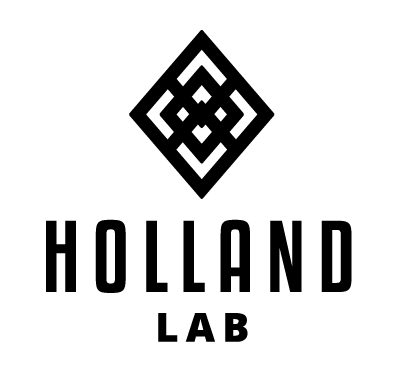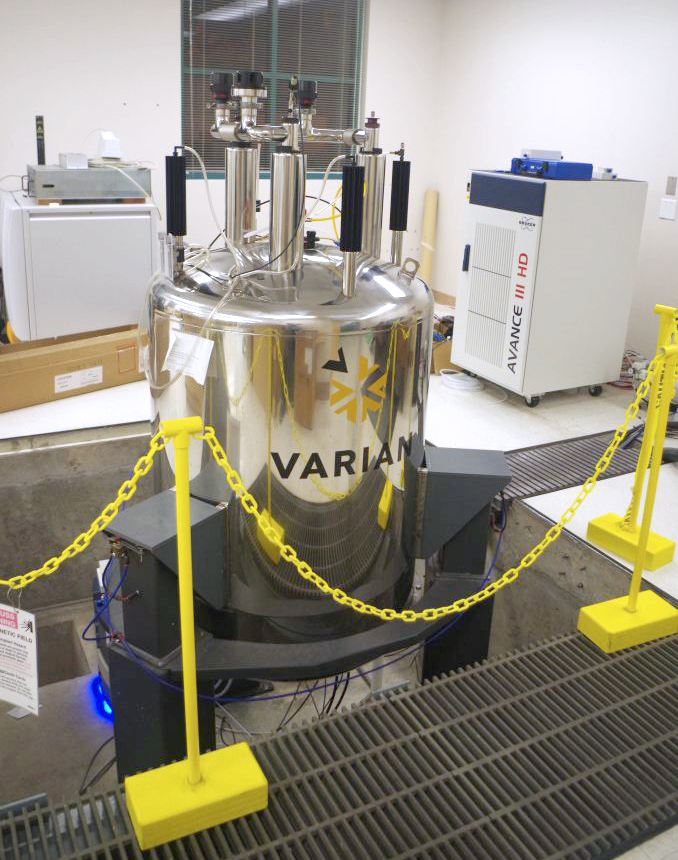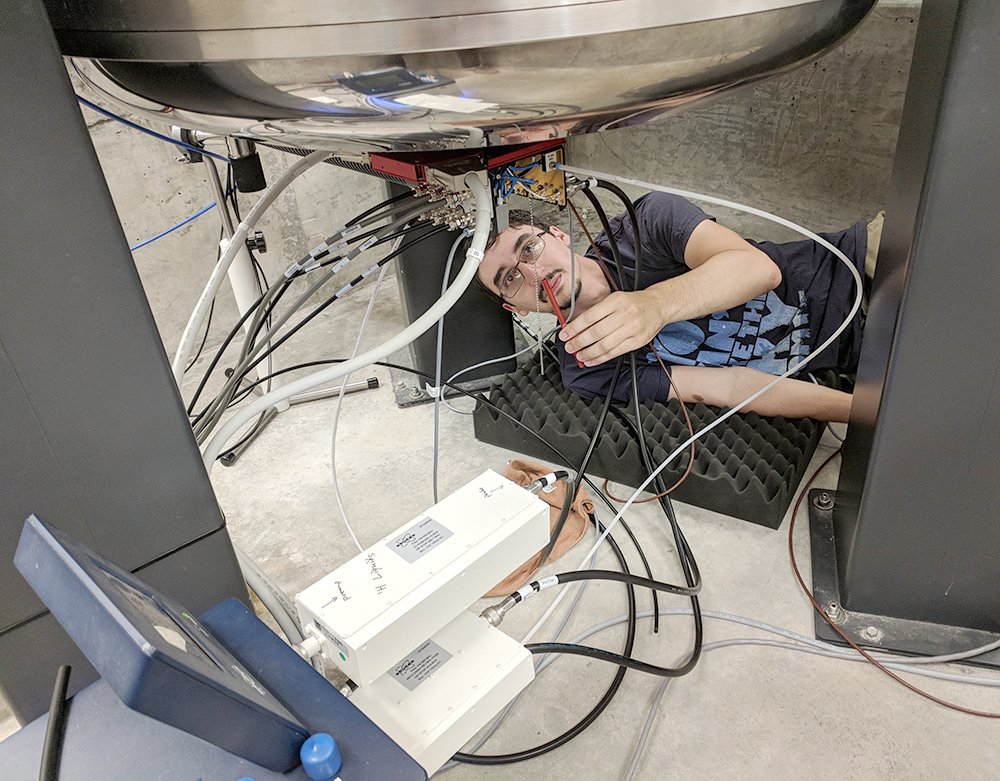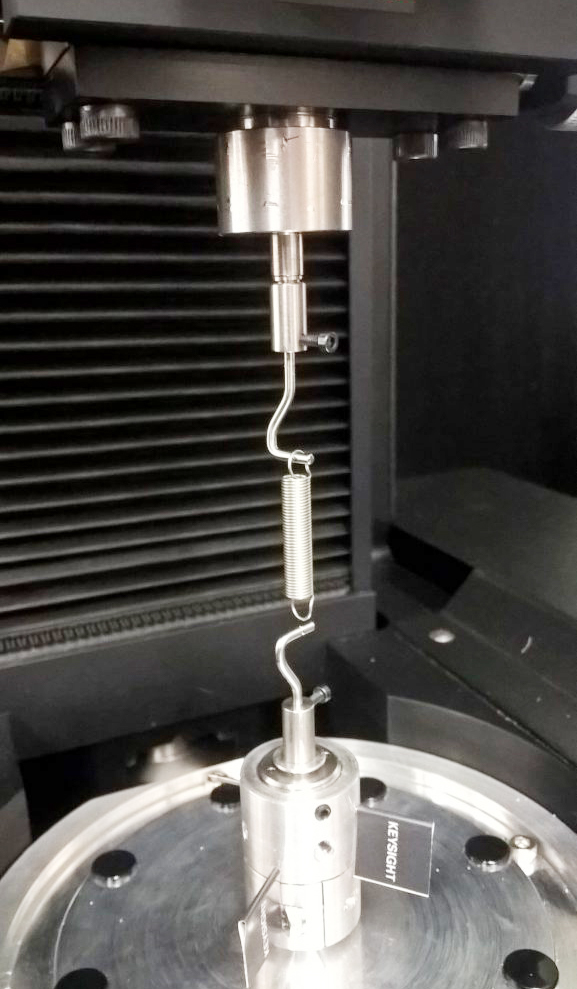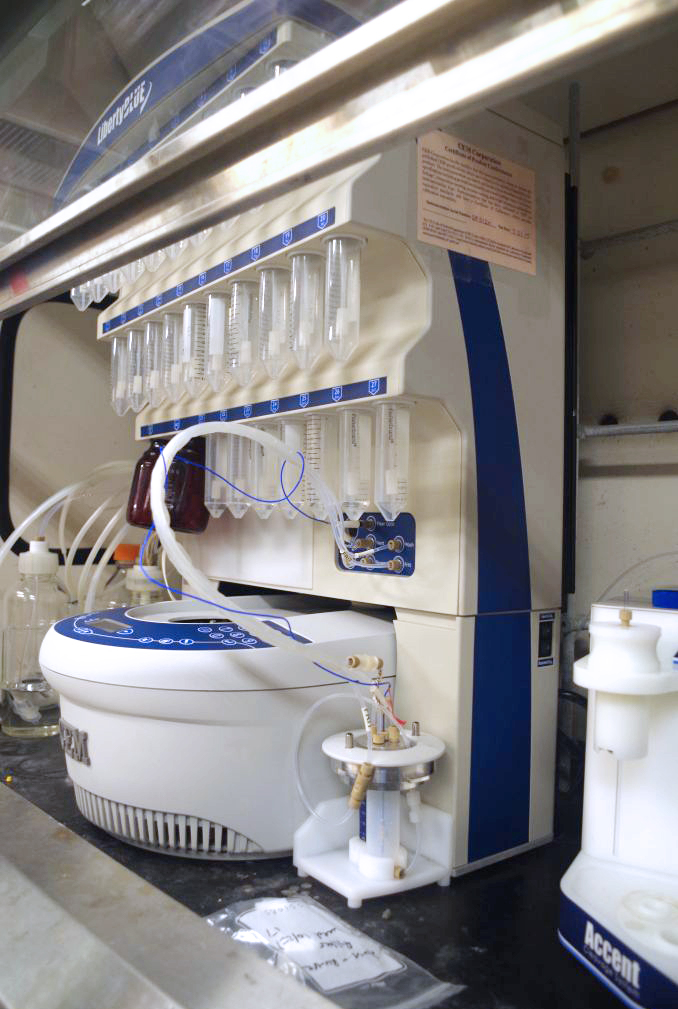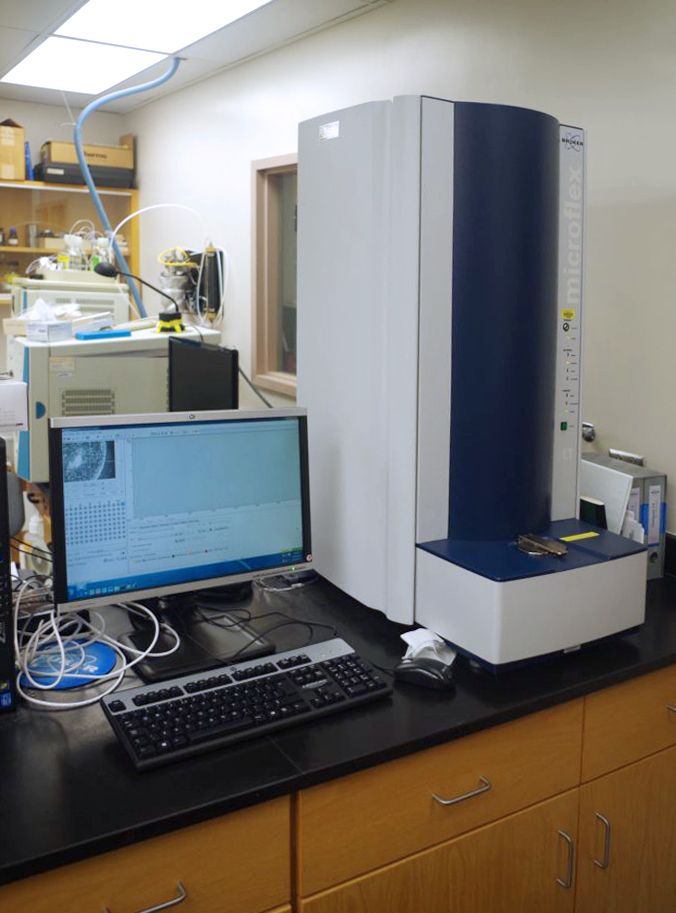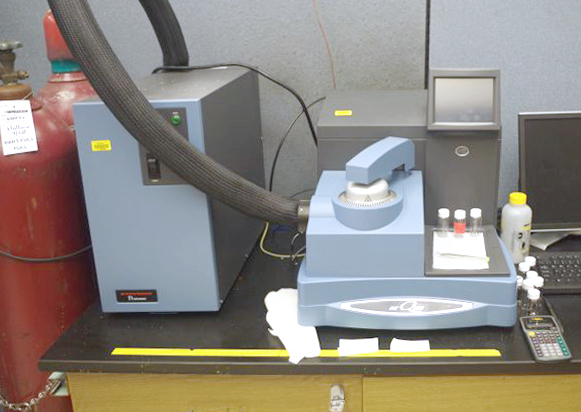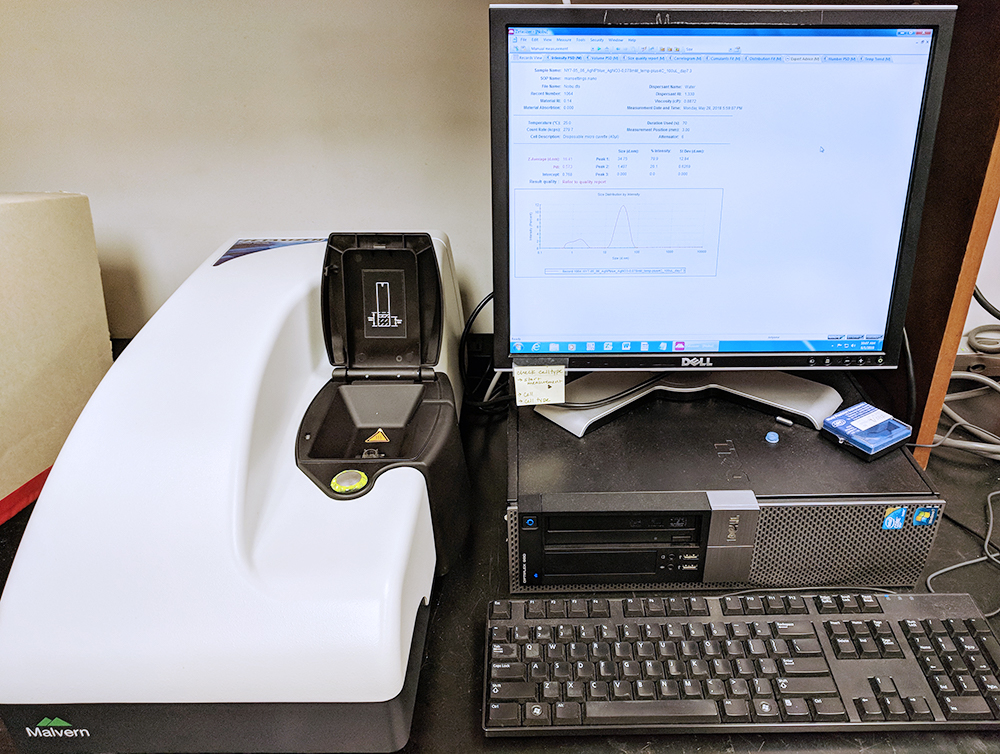Instruments
For molecular structure and dynamic investigations we use a high-field Bruker 600 MHz NMR spectrometer, using an Avance III console. To study the biological components of spider silk in solution, we use a three-channel liquids probe. This probe is currently being used to generate 3D NMR spectra that give us insight into the structure of the proteins that make up silk fibers, prior to spinning. For solid state analysis, we have a suite of probes which accommodate rotors of various sizes; from 4mm down to 1.9mm. These probes are capable of both static and magic angle spinning (MAS) with a speed in excess of 40kHz! This gives excellent resolution and signal-to-noise for looking at samples with broad peaks. Besides these samples, we also study silica nanoparticles in various states (Stöber, fumed, mesoporous, etc). These particles have applications in targeted drug-delivery systems, and adsorbing different molecules to their surface requires powerful spectroscopic techniques for elucidation.
Mechanical Tester
Our newest instrument is a Keysight T150 Mechanical Tester which is being used to test the tensile strength of natural and synthetic spider silks. While silkworms create only one type of silk, spiders use a wide array of silk fibers for various tasks such as prey wrapping, orb or cob web weaving, or egg case formation. These silks all have different mechanical properties which can be attributed to the molecular structure of the protein fibers of which they are composed. This instrument helps us bridge the knowledge gap between the molecular and macroscopic properties of silk.
Liberty Blue Peptide Synthesizer
The Liberty Blue peptide synthesizer from CEM is an improvement over conventional methods of Solid Phase Peptide Synthesis (SPPS). Our peptide synthesizer is an automated high-throughput system which features reduced solvent usage in comparison to traditional SPPS. The Liberty Blue utilizes fluidic delivery and a fiber optic thermal probe to provide rapid and accurate measurements during each step of the reaction, while still allowing the user to maintain full control over synthesis. The microwave attachment provides quick and even heating, increasing the rate of bond formation and deprotection so that synthesis only takes a couple of hours instead of weeks. We utilize this instrument to synthesize peptide sequences which are then adsorbed onto nanoparticles, and longer protein sequences to investigate protein lipid interactions. SPPS opens up the possibility to investigate proteins which are difficult to extract from tarantulas and recombinantly express from E. coli. Additionally, the Liberty Blue system allows us to obtain high yields of linear peptides for all the projects in our group.
MALDI-MS
The microflex LT instrument is a MALDI (Matrix Assisted Laser Desorption/Ionization) bench top reflector Time Of Flight mass spectrometer with the Bruker microSCOUT ion source, and a vertically arranged ion flight tube that contains the optional reflector, and dual microchannel plate detectors. The instrument is available for common use in Department of Chemistry and Biochemistry and we use the instrument for post-synthesis protein identifications and characterizations. A combination of analytical methods such as MALDI, HPLC, and NMR are getting utilized by our group to confirm a variety of necessary information about the products.
Thermogravimetric Analyzer
The TGA Q50 is a rugged, reliable, and cost effective TGA that offers exceptional value as a compact, general-purpose thermogravimetric analyzer. Integral mass flow control, gas switching capability, and temperature range to 1000°C allows full control and a myriad of applications. We use this instrument to probe binding affinity of biomolecular ligands towards different nanoparticles. The TGA allows us to visualize moisture content as well as quantify adsorbed ligands and investigate their decomposition. Few species of nanoparticles have demonstrated the capability to induce peptide bond formation, which we can analyze by looking at the first derivative (DTG) curve. Mineral oxide catalysis has possible origin of life implications. Additionally, we use the TGA to verify thermal stability and purity of Stöber and mesoporous silica nanoparticles synthesized in our lab. TGA can be used in conjunction with other thermal analysis techniques such as DSC which is often critical to understanding the true nature of thermal events.
Differential Scanning Calorimetry (DSC)
Differential scanning calorimetry, or DSC, is a thermoanalytical technique in which the difference in the amount of heat required to increase the temperature of a sample and reference is measured as a function of temperature. The Holland lab uses this technique to measure phase transition temperatures of lipid mixtures as well as nanoparticles coated with lipid bilayers. Mineral oxide catalysis has possible origin of life implications. Additionally, we use the TGA to verify thermal stability and purity of Stöber and mesoporous silica nanoparticles synthesized in our lab. TGA can be used in conjunction with other thermal analysis techniques such as DSC which is often critical to understanding the true nature of thermal events.
Dynamic Light Scanning (DLS)
Dynamic light scattering (DLS) is a technique in physics that can be used to determine the size distribution profile of small particles in suspension or polymers in solution. Particles in solution scatter light proportional to their size. This scattered light is tracked and correlated to size using the Stokes-Einstein equation. The Holland lab uses this technique to measure the size of proteins, liposomes, and nanoparticles.
